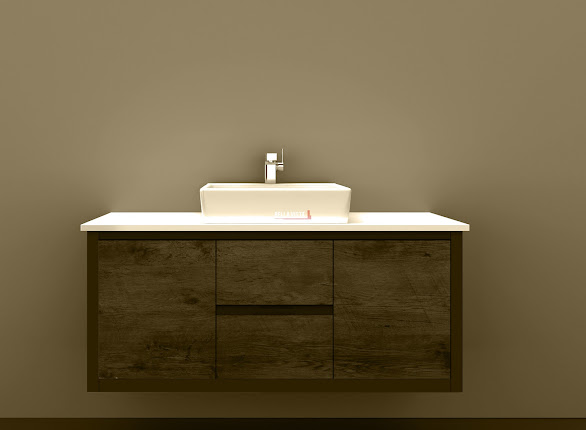Transforming Surfaces: Installing Custom Hydrographics
Custom hydrographics, also known as water transfer printing or hydro dipping, is a versatile method used to apply intricate designs to three-dimensional objects. This innovative technique allows for the customisation of various items, from automotive parts to household décor, providing a seamless and durable finish. In this blog, we'll explore the process of installing custom hydrographics and delve into the many benefits it offers.
Understanding Custom Hydrographics
Hydrographic printing involves transferring a design from a specialised film onto an object. The process starts with priming and painting the item to prepare it for dipping. The film, printed with the desired pattern, is floated on the surface of a water tank. A chemical activator is then applied to dissolve the film, leaving the ink pattern on the water's surface. The object is dipped through the floating ink, which adheres to its surface, creating a flawless and continuous design.
Steps for Installing Custom Hydrographics
1. Preparation of the Object
The first step in the installation process is preparing the object to be hydro-dipped. This involves thoroughly cleaning the item to remove any dirt, grease, or contaminants that could affect the adhesion of the hydrographic film. Once cleaned, the object is primed with a base coat of paint. The colour of the base coat can influence the final appearance of the design, so it's important to choose a shade that complements the pattern being applied.
2. Cutting and Placing the Film
The next step is to cut a piece of hydrographic film to fit the size of the object. The film is carefully placed on the surface of the water in the dipping tank, ensuring there are no air bubbles or wrinkles. It's crucial to handle the film with clean, dry hands to avoid any damage or contamination.
3. Activating the Film
Once the film is properly positioned on the water, a chemical activator is sprayed over it. This activator dissolves the film, leaving only the ink pattern floating on the water's surface. The activation process is critical, as it ensures that the ink remains stable and ready for transfer onto the object.
4. Dipping the Object
With the film activated, the object is slowly and steadily dipped into the water tank. The angle and speed of the dip can affect the final result, so it's important to be precise. As the object is submerged, the ink pattern wraps around its surface, adhering to every contour and curve. This step requires a steady hand and careful attention to detail to achieve a seamless application.
5. Rinsing and Drying
After the object has been dipped and the design has adhered to its surface, it is removed from the water and rinsed to remove any excess film and activator. The rinsing process helps to set the pattern and ensures a smooth finish. The object is then left to dry completely before moving on to the next step.
6. Applying a Clear Coat
To protect the newly applied design and give it a glossy finish, a clear coat is applied over the object. This topcoat provides durability and resistance to scratches, UV light, and other environmental factors. It's essential to allow the clear coat to cure fully, following the manufacturer's instructions, to ensure maximum protection and longevity.
Benefits of Installing Custom Hydrographics
1. Versatility in Design
One of the primary advantages of custom hydrographics is the vast array of designs available. From carbon fibre and camouflage to intricate floral patterns and abstract art, the possibilities are virtually endless. This versatility allows for personalised customisation of a wide range of items, making it a popular choice for enthusiasts and professionals alike.
2. Durable and Long-Lasting Finish
Installing custom hydrographics provides a durable and long-lasting finish that can withstand daily wear and tear. The clear coat applied during the final step adds an extra layer of protection, ensuring the design remains intact and vibrant for years to come. This durability makes hydrographics suitable for both decorative and functional applications.
3. Enhanced Aesthetic Appeal
Custom hydrographics significantly enhance the aesthetic appeal of the objects they are applied to. Whether it's a car part, a piece of furniture, or a personal gadget, the unique designs and high-quality finish achieved through hydro dipping can transform ordinary items into eye-catching pieces of art.
4. Cost-Effective Customisation
Compared to traditional methods of customisation, such as hand painting or airbrushing, hydrographic dipping is a cost-effective solution. The process is relatively quick and efficient, allowing for high-quality results at a fraction of the cost. This affordability makes it accessible to a wider audience, from hobbyists to large-scale manufacturers.
5. Wide Range of Applications
Hydrographics can be applied to a diverse range of materials, including plastics, metals, ceramics, and wood. This wide applicability makes it an ideal choice for various industries, including automotive, sporting goods, home décor, and electronics. The ability to customise different types of surfaces with intricate designs adds to the appeal and versatility of this technique.
Conclusion
The process of installing custom hydrographics offers a unique and efficient way to personalise and enhance the appearance of various objects. From preparation and dipping to rinsing and clear coating, each step is crucial in achieving a flawless and durable finish. The benefits of hydrographic dipping, including its versatility, durability, and cost-effectiveness, make it a preferred choice for customisation across multiple industries. Whether you're looking to transform a car part or add a personal touch to a household item, custom hydrographics provides endless possibilities for creative expression.



Comments
Post a Comment